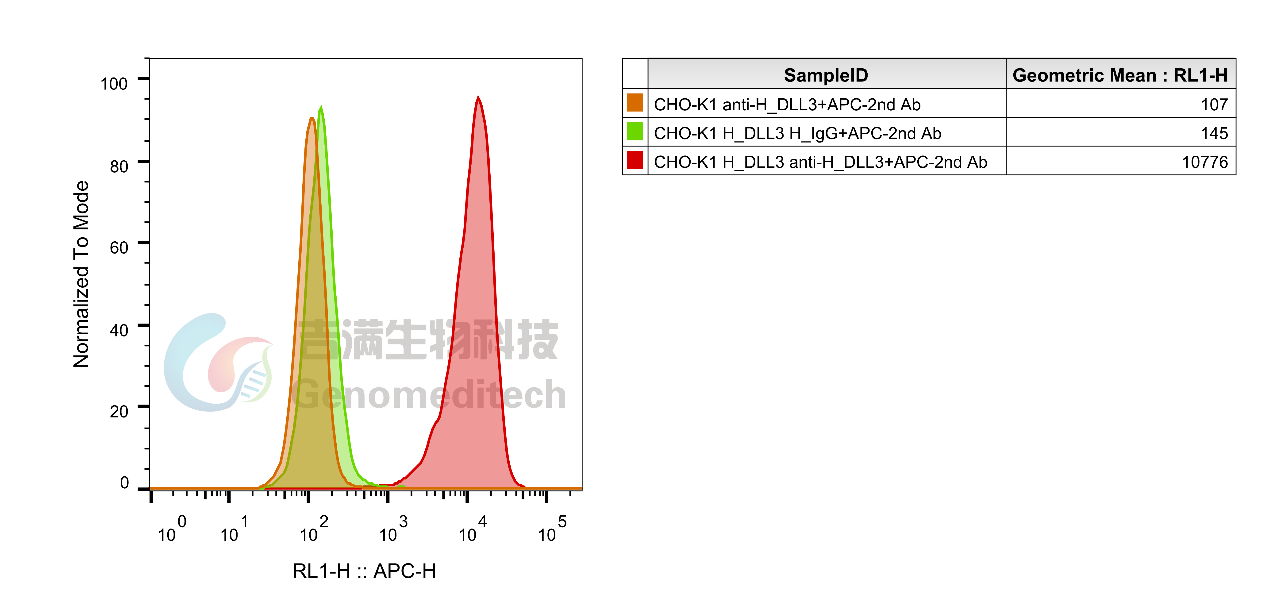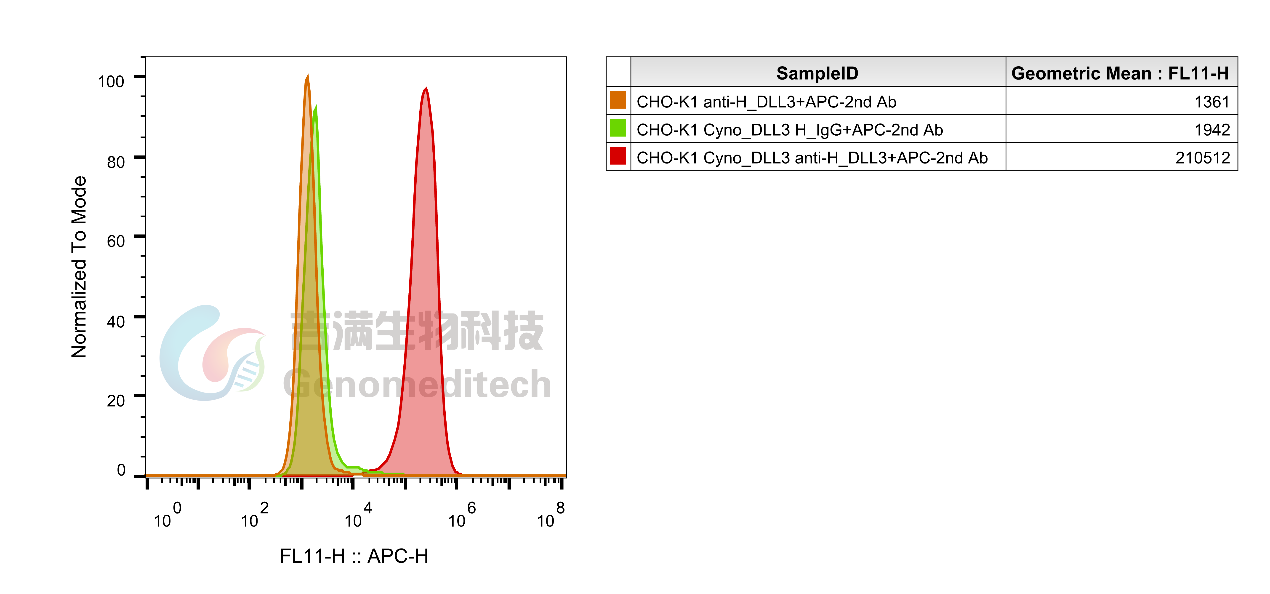Cat.No:GM-26560AB
Product:Anti-H_DLL3 hIgG1 Antibody(Rovalpituzumab)
Cat.No:GM-26560AB
Product:Anti-H_DLL3 hIgG1 Antibody(Rovalpituzumab)
GM-26560AB-10 10 μg
GM-26560AB-100 100 μg
GM-26560AB-1000 1mg
Species Reactivity Human; Cynomolgus
Clone Rovalpituzumab
Source/Isotype Monoclonal Human IgG1 /κ
Application Flow Cytometry
Specificity Detects DLL3
Gene DLL3
Other Names SCDO1
Gene ID Q9NYJ7 (Human); A0A2K5WSR1-1 (Cynomolgus)
Background Delta-like 3 (Drosophila), also known as DLL3, is a protein which in humans is encoded by the DLL3 gene. This gene encodes a member of the delta protein ligand family. This family functions as Notch ligands that are characterized by a DSL domain, EGF repeats, and a transmembrane domain. Expression of DLL3 is highest in fetal brain. It plays a key role in somitogenesis within the Paraxial mesoderm. Mutations in this gene cause the autosomal recessive genetic disorder Jarcho-Levin syndrome. Expression of the gene occurs in Neuroendocrine tumors, which has been targeted as a potential pathway for treatment. An experimental drug, rovalpituzumab tesirine, targets DLL3 as a possible treatment for lung cancer.
Storage Store at 2-8℃ short term (1-2 weeks).Store at ≤ -20℃ long term. Avoid repeated freeze-thaw.
Formulation Phosphate-buffered solution, pH 7.2.
Endotoxin < 1 EU/mg, determined by LAL gel clotting assay


Cat.No:GM-26560AB
Product:Anti-H_DLL3 hIgG1 Antibody(Rovalpituzumab)
GM-26560AB-10 10 μg
GM-26560AB-100 100 μg
GM-26560AB-1000 1mg
Species Reactivity Human; Cynomolgus
Clone Rovalpituzumab
Source/Isotype Monoclonal Human IgG1 /κ
Application Flow Cytometry
Specificity Detects DLL3
Gene DLL3
Other Names SCDO1
Gene ID Q9NYJ7 (Human); A0A2K5WSR1-1 (Cynomolgus)
Background Delta-like 3 (Drosophila), also known as DLL3, is a protein which in humans is encoded by the DLL3 gene. This gene encodes a member of the delta protein ligand family. This family functions as Notch ligands that are characterized by a DSL domain, EGF repeats, and a transmembrane domain. Expression of DLL3 is highest in fetal brain. It plays a key role in somitogenesis within the Paraxial mesoderm. Mutations in this gene cause the autosomal recessive genetic disorder Jarcho-Levin syndrome. Expression of the gene occurs in Neuroendocrine tumors, which has been targeted as a potential pathway for treatment. An experimental drug, rovalpituzumab tesirine, targets DLL3 as a possible treatment for lung cancer.
Storage Store at 2-8℃ short term (1-2 weeks).Store at ≤ -20℃ long term. Avoid repeated freeze-thaw.
Formulation Phosphate-buffered solution, pH 7.2.
Endotoxin < 1 EU/mg, determined by LAL gel clotting assay

